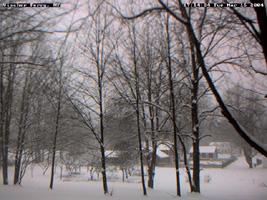
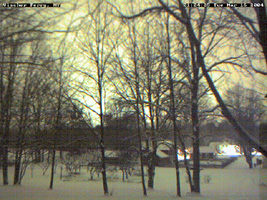


Living in Upstate New York, USA we get a reasonable amount of snow every year. This year we put a 1-Wire Weather Station together. One of the local TV stations ( WRGB Channel 6) has put together a web interface for local weather spotters to report weather information ( WeatherNet6). In the winter this includes snowfall.
What surprised me was the inconsistency of how people / agencies measure snowfall.
The local TV station uses a snow board which they clear after every
inch of snow. Other people say you have to clear the board at least once
a day but no more than four times a day.
Mother Nature also makes measuring snowfall interesting because of drifting, compresssion,
and melting.
Here are some snow measurement references I found on the web:
I was interested in how much snow was on the ground and at what rate it was falling and melting. I thought developing a sensor that measured this continuously would be of interest. If the sensor could be made inexpensively, then the power of the Internet could be used to collect a large number of samples over large areas.
The popular weather data collections sites ( Weather Underground, Citizen Weather Observer Program) currently don't provide fields for snowfall, but this is changing. I noticed that WeatherMatrix has started a beta system for reporting snowfall.
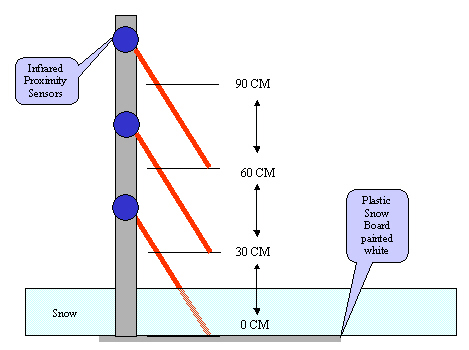
There are two classes of inexpensive devices available for making non-contact distance measurements.
Ultrasonic sensors have a wide beam so it is hard to focus them on a particular area. They need to be mounted perpendicular to the snow surface. The speed of sound changes with the temperature, so for accurate readings the sensor must be temperature compensated. I chose the Sharp GP2D12 infrared triangulation measurement sensor. It has a lower cost, smaller foot print, and has a roughly 3cm spot size. It is available from Acroname for less than $12. It works on the principal of triangulation. An infrared LED emits a beam of light. If an object is in range, the light is reflected back to the detector. The detector lense focuses the reflected light onto a linear CCD array. The location that the reflected lights hits the detector is dependent on the distance of the object from the sensor.
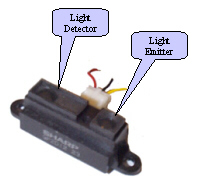
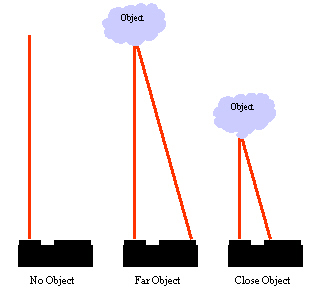
The GP2D12 outputs a non-linear analog voltage corresponding to the distance of the reflective object. The Sharp specification chart below shows the relationship. The sensor can measure in the range from 10-80 cm. The voltage is approximately 2.4V at 10cm and at 0.52 at 60cm. The sensor draws about 34mA. The maximum is stated to be 50mA. The beam spot size is 2-3cm.
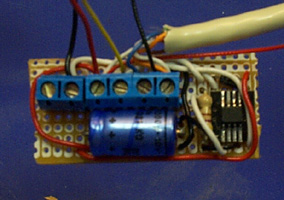
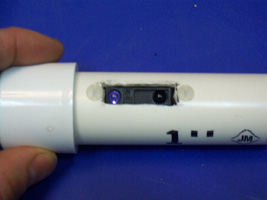
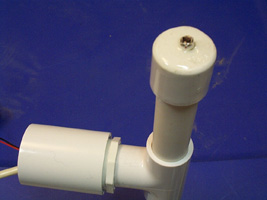
A second prototype, built with a DS2438 has an added light sensor and thermometer to compensate the Sharp sensor for the sun and temperature. From the specification sheets I originally didn't think the DS2438 AD converter would be accurate with the low voltages. But tests so far seem to show it is similar to the DS2450.
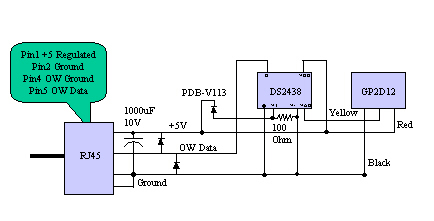
I ended up building a small 5V regulated power supply that injects the +5 and ground on unused wires in the CAT-5 cable with RJ-45 connectors that goes out to the snow sensor. AAG makes the TAI8530 1-Wire Power Supply, but it has been out of stock. The down side of providing power over the CAT-5 cable is that it appears to add noise and limit the distance the 1-Wire cable can run.
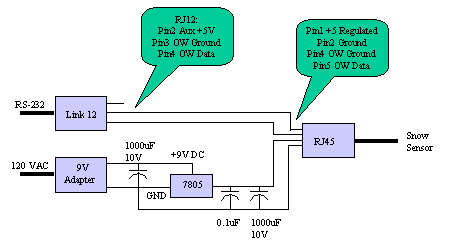
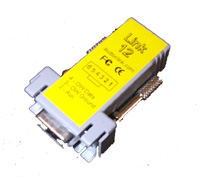
The second prototype is now collecting data and is being evaluated for accuracy.
Here is some sensor data from the March 15-16th 2004 snow storm
 3/3 11:34am 0cm
3/3 11:34am 0cm
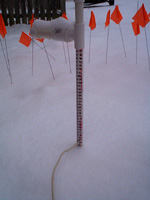 3/3 2:42pm 6cm
3/3 2:42pm 6cm
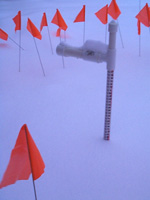 3/3 5:43pm 13cm
3/3 5:43pm 13cm
 3/3 9:31pm 14cm
3/3 9:31pm 14cm
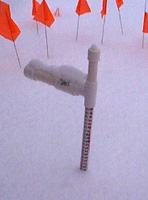 3/4 8:52am 19cm
3/4 8:52am 19cm
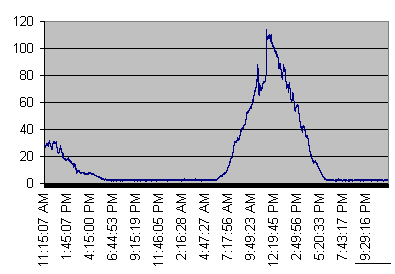 mV from solar sensor
mV from solar sensor
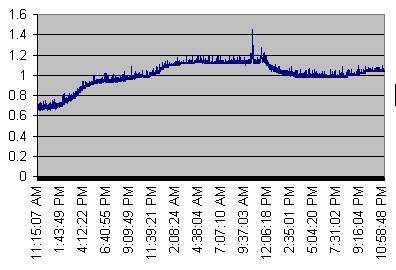 V from proximity sensor
V from proximity sensor
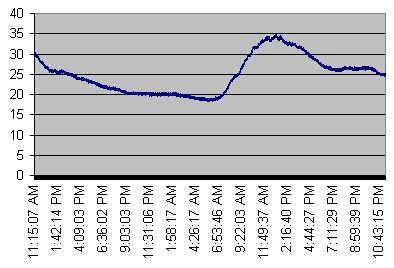 Degrees F
Degrees F